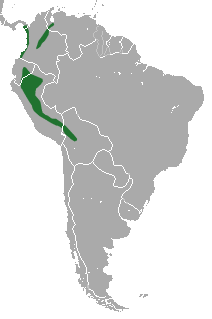| Sepia short-tailed opossum [1] | |
|---|---|
| Scientific classification | |
| Domain: | Eukaryota |
| Kingdom: | Animalia |
| Phylum: | Chordata |
| Class: | Mammalia |
| Infraclass: | Marsupialia |
| Order: | Didelphimorphia |
| Family: | Didelphidae |
| Genus: | Monodelphis |
| Species: | M. adusta |
| Binomial name | |
| Monodelphis adusta (Thomas, 1897) | |
 | |
| Sepia short-tailed opossum range | |
The sepia short-tailed opossum (Monodelphis adusta) is a species of opossum in the family Didelphidae found in Colombia, Ecuador, Panama, Peru and Venezuela. [2]
